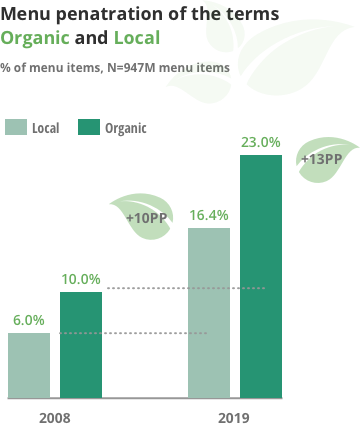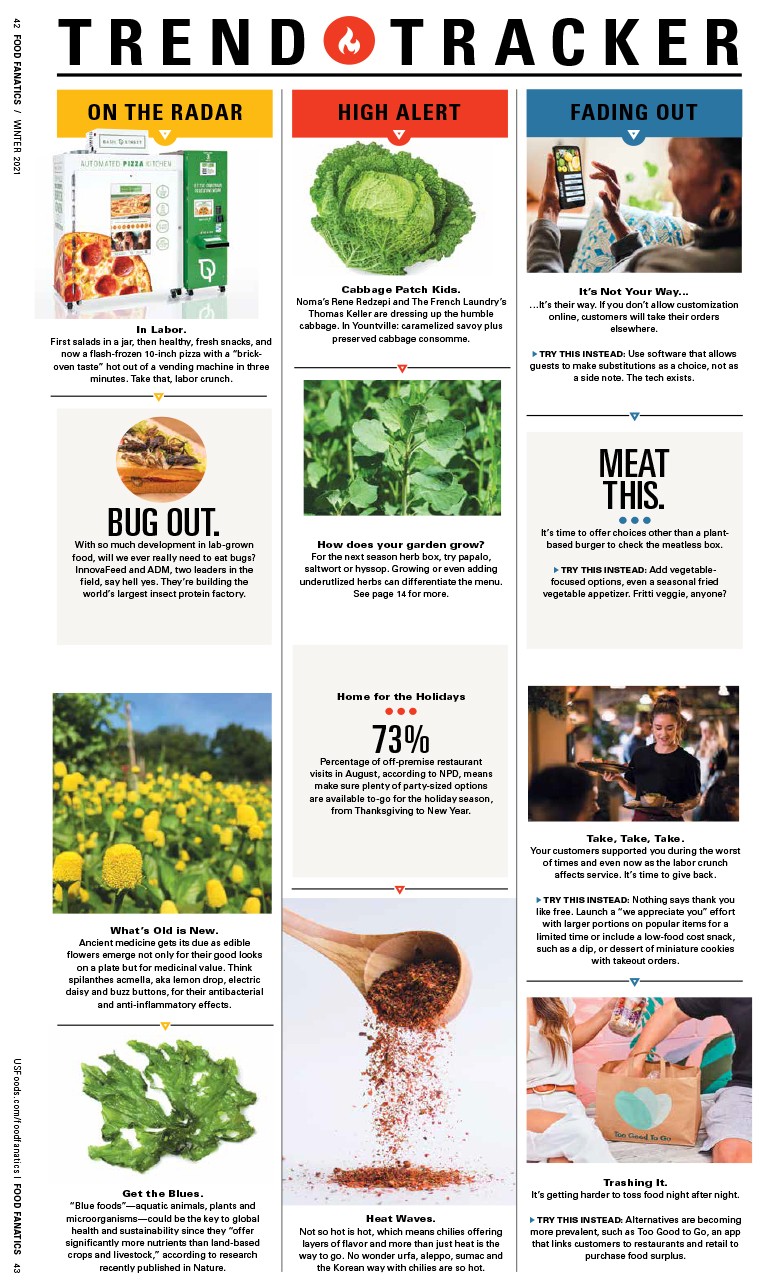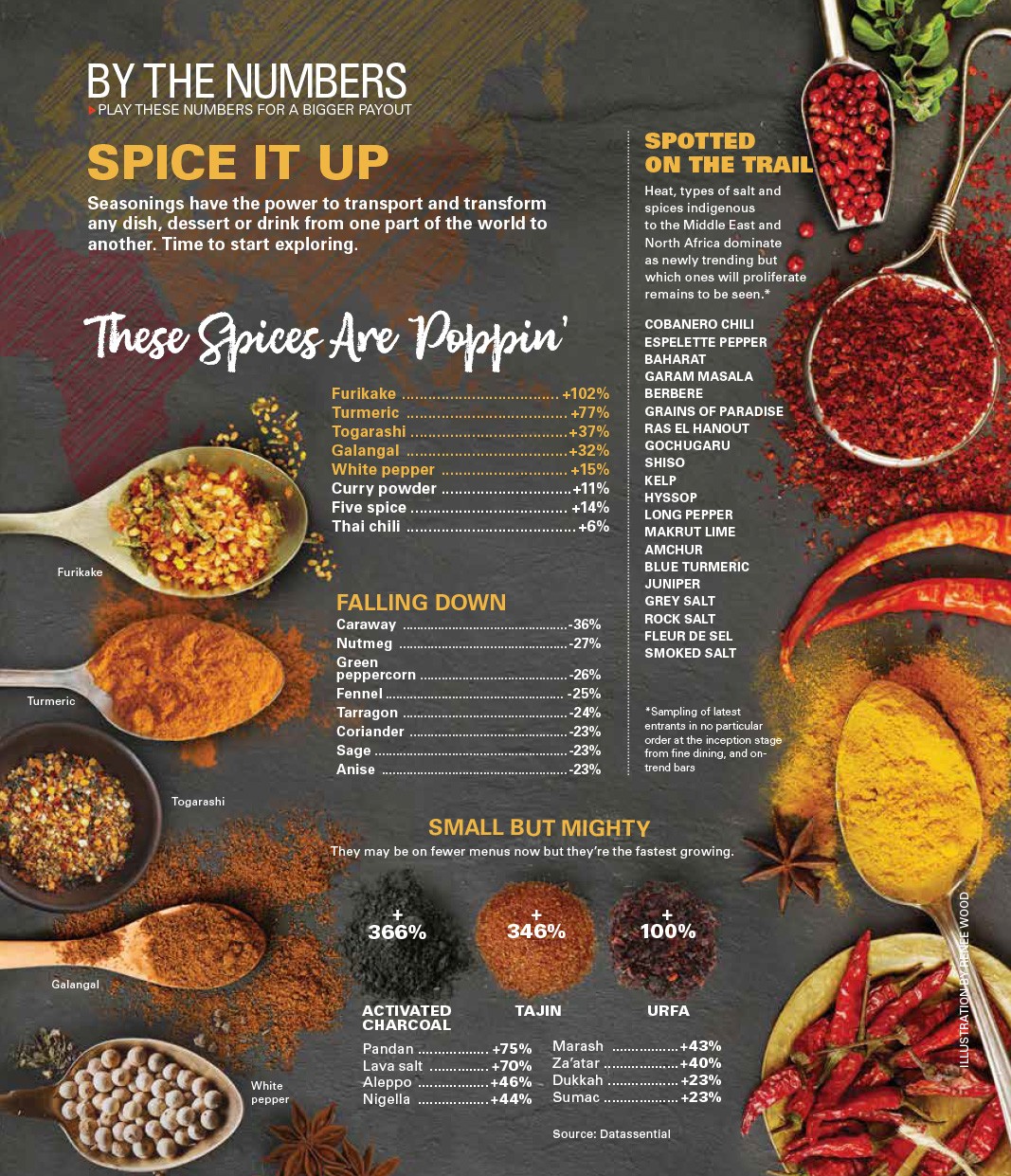WHAT’S IN A LABEL?
Food terms like “local,” “sustainable” and “all-natural” are increasingly appearing on menus – get tips on how to use them and price your menu the right way.
Not too long ago, diners had modest expectations for menus. People perused them, rather than study each ingredient in detail. Ignorance was bliss.
This is no longer the case. As local, sustainable and all-natural products continue to gain relevance, more restaurants – from fine dining to fast casual – are using these ingredients and increasingly touting their presence. Diners eat it up, poring over menus with the same scrutiny they apply to grocery labels for those feel-good buzzwords.
Confused on these claims and buzzwords? Don’t worry, you’re not alone.
As the area of transparency and sustainability evolves, we’re all on a journey together. Many of these menu buzzwords have lacked regulation and standardized language in the past. However, rigor continues to be added through many third-party certifications – such as USDA Organic, American Humane Certification or Raised without Antibiotics, to give a few examples.
It’s About Trust
According to Technomic, 1/3 of consumers are very likely to choose a sustainable restaurant, while 46% of consumers said they would reduce the number of visits if they find out their favorite restaurant or foodservice establishment is not using sustainable practices.
Today, diners and consumers want to feel more connected to the food they are eating – after all, it’s something each of us does three times a day (or if you like to snack, like me, five or six times a day). Negative news reports, disconnection from our agricultural system, and unclear sourcing and food ingredients are some of the factors that have caused diners to turn away.
When consumers feel like their desires are being met by a restaurant, they’re more likely to keep coming back. In a climate that increasingly calls for clean ingredients and transparent sourcing, restaurant operators stand to benefit from specifically mentioning it.
Communicate Your Story
As a chef or operator, you went through the trouble of responsible sourcing, so ensure you’re sharing the story of the dish. Customers want to hear about it, in fact. According to Technomic, the preferred methods of hearing about it are:
- Commercials or streaming videos
- On their website
- Signage in public areas of the restaurant
- Via menu/product
- Through social media (although this was highest for Gen Z and Millennials)
Operators are reacting to diners’ demands by placing key words on their menus
Dataessential assesses thousands of menus to determine some of the most used key words and phases across the country. The terms that have seen growth in recent years are ‘local’ and ‘organic’.
Today, organic appears on nearly a quarter of menus.
But when it comes to Animal Care, only 20% of operators refer to animal care in communications to diners.

Today, menus across the country are using keywords to share information with their diners. We’re seeing words like sustainable, local, organic, raised without antibiotics, etc., showing up all across the country.
Price It Right
Once keywords are on the menu, or the story is shared, ensure you’re pricing your products in line with the market. Our research partners, Datassential, pull searched menus across the country to identify the difference in price between dishes with claims and conventional dishes. They found that compared to a conventional dish, chefs can add an additional percentage above for sustainable dishes:
| Category | Median % Price Increase | |
|---|---|---|
| Animal Care* | Poultry | 5% |
| Pork | 10% | |
| Beef | 28% |
*Datassential 2019
Common Food Label Terms
USDA Organic: Regulated term from the United States Department of Agriculture that ensures a product is free of synthetic fertilizers, genetic modification and toxic pesticides. Certified organic beef, poultry and dairy products are guaranteed to be free of hormones and antibiotics.
USDA Process Verified Grass-Fed: Although grass-fed does not exclude the use of antibiotics or hormones, the term ensures that animals ate grass or foraged greens for their entire lives, instead of being grain-finished in the final months before slaughter.
No Antibiotics Administered: Meat and poultry products that are stamped with this term ensure that no antibiotics were ever given to the animal during their lifetime. This should not be confused with “no added hormones.”
Top three descriptions consumers want to see on food labels are:
- No artificial flavors, colors, additives or preservatives
- 100% natural
- No antibiotics or hormones



